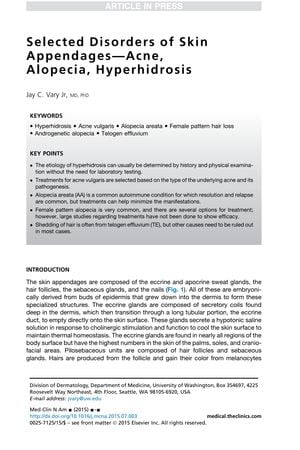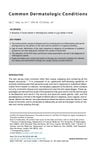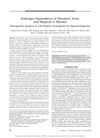Selected Disorders of Skin Appendages—Acne, Alopecia, Hyperhidrosis
November 2015
in “Medical Clinics of North America”

TLDR The conclusion is that acne, alopecia, and hyperhidrosis are common skin issues with various treatments available, and accurate diagnosis is key for effective management.
The document from November 1, 2015, provides an overview of common skin appendage disorders, including acne, various forms of alopecia, and hyperhidrosis. It details the prevalence, pathogenesis, and treatment options for acne, which affects 35% to 90% of adolescents and can persist into adulthood, leading to psychological distress. Acne treatments target overproduction of keratinocytes, sebaceous gland production, bacteria, and androgens, with options like tea tree oil, salicylic acid, benzoyl peroxide, topical retinoids, antibiotics, isotretinoin, and hormonal treatments. The document also covers the diagnosis and management of non-scarring alopecias such as Alopecia Areata (AA), Androgenetic Alopecia (AGA), Female Pattern Hair Loss (FPHL), and Telogen Effluvium (TE). AA treatments include topical steroids and immunomodulatory agents, while AGA and FPHL may be treated with minoxidil, antiandrogens, and hair transplantation. TE, a common cause of diffuse hair shedding, is usually self-resolving but can lead to significant thinning. Diagnosis of TE involves a history of sudden hair shedding with a clear trigger or by exclusion, and a positive hair pull test. The document emphasizes the importance of thorough examination and history-taking for accurate diagnosis and management of these conditions.
View this study on sciencedirect.com →
Cited in this study
research Alopecia areata is driven by cytotoxic T lymphocytes and is reversed by JAK inhibition
Alopecia areata can be reversed by JAK inhibitors, promoting hair regrowth.

research Common Dermatologic Conditions
The document concludes that quick referral and appropriate treatments are crucial for managing common skin conditions and preventing permanent damage.

research British Association of Dermatologists’ guidelines for the management of alopecia areata 2012
Guidelines suggest various treatments for alopecia areata, but leaving it untreated is also an option as 80% cases may recover on their own.

research Alopecia Areata
Alopecia Areata is an autoimmune condition causing hair loss with no cure and treatments that often don't work well.

research Efficacy and Safety of Finasteride Therapy for Androgenetic Alopecia
Finasteride helps hair growth but may cause sexual side effects.

research Alopecia areata update
Half of people with Alopecia Areata may see hair regrowth within a year without treatment, but recovery is unpredictable.

research Diffuse hair loss in an adult female: Approach to diagnosis and management
To manage hair loss in adult women, find the cause and treat it accordingly.

research Androgen Dependence of Hirsutism, Acne, and Alopecia in Women
Hirsutism is more linked to high androgen levels than acne or hair loss, and a mix of hormonal tests is best for diagnosis; certain treatments can reduce symptoms.

research A multicenter, randomized, placebo-controlled, double-blind clinical trial of a novel formulation of 5% minoxidil topical foam versus placebo in the treatment of androgenetic alopecia in men
New 5% minoxidil foam effectively promotes hair growth and is safe for use.
research Alopecia in the United States: Outpatient utilization and common prescribing patterns

research Telogen effluvium
Telogen effluvium is a common type of hair loss that can resolve on its own or become chronic, with treatment depending on early diagnosis.

research Chronic telogen effluvium: Increased scalp hair shedding in middle-aged women
Middle-aged women with chronic telogen effluvium experience increased hair shedding but usually don't get significantly thinner hair.
Related

research Isotretinoin-Unresponsive Acne as a Sign of a Congenital Disorder: A Case of 21-Hydroxylase Deficiency
Acne not improved by usual treatments may indicate a genetic disorder.